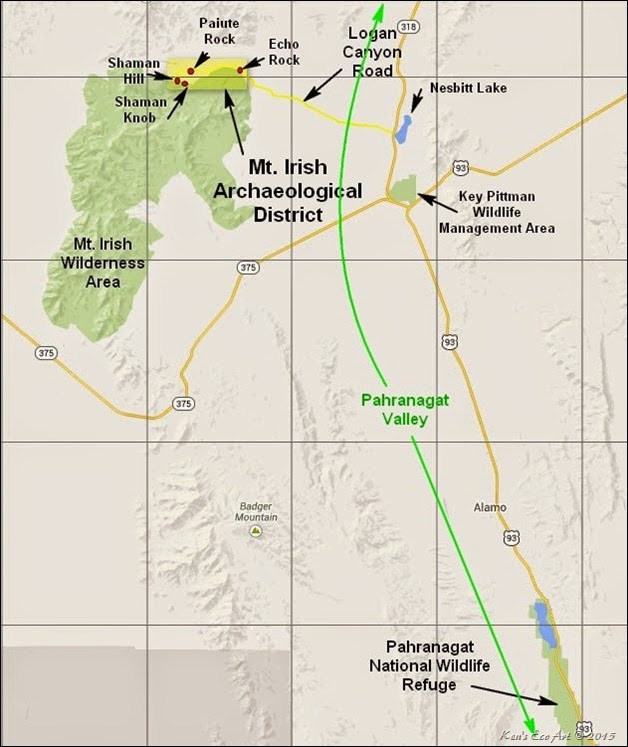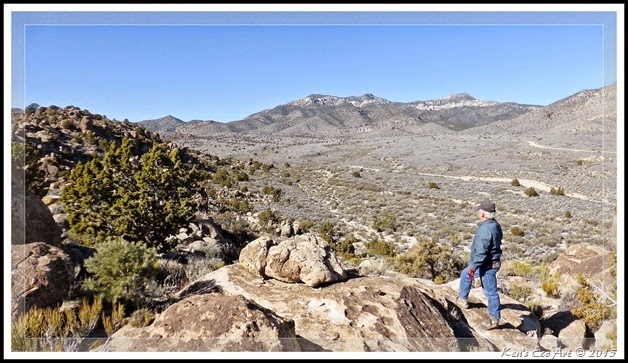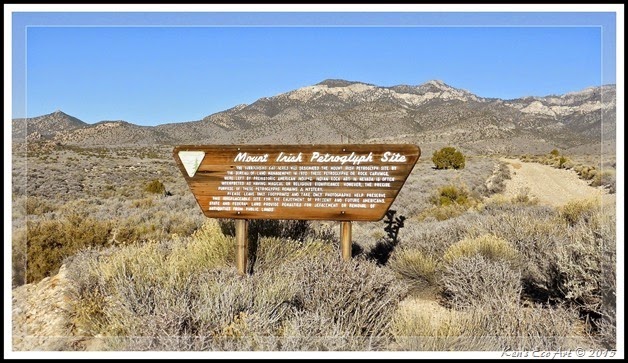{Click on an image to enlarge, then use the back button to return to this page}
This page last updated on 10/11/2017
Introduction: As I began to discover more and more rock art sites during my hikes over these past several years, I have become witness to far too many examples of where persons had seemed fit to deface them with graffiti and other examples of damage. Eventually I realized that the sharing of my hiking adventures could have the potential to increase public exposure, and thereby increasing the possibility for even more damage. As a result, I decided to preface each of my rock art pages with the following information to help educate visitors about the importance of these fragile cultural resources. Before scrolling down, I implore you to READ the following ... as well as the linked page providing guidelines for preserving rock art.
Here are a few simple guidelines you can follow that will help to preserve these unique and fragile cultural resources that are part of our heritage. Guidelines for Preserving Rock Art. If you would like to learn more about the Nevada Site Stewardship Program, go to my page ... Nevada Site Stewardship Program (NSSP).
| ||
| ||
| Directions: Mt. Irish Rock Art and Archaeological District is located in the Pahranagat Valley (Fig. 02), about 110 miles north of Las Vegas. From Las Vegas, drive north on I-15 to US Highway 93. Turn left onto US Highway 93 and drive north past the towns of Alamo and Ash Springs to the intersection of Highways 93 and 318. The entrance and gate to Mount Irish Rock Art Site is 3.9 miles from the intersection of State Route 375, State Route 318 and U.S. Route 93 (the “Y”). Traveling north on State Route 318, towards Ely, it is on the left (west) side of the road just past Key Pittman Management Area. A yellow BLM marker is just to the left of the gate. Go through the gate, and continue approximately 9.0 miles to the Echo Rock, the first petroglyph area (Fig. 02). | ||
| Area Description: The Mount Irish Archaeological Site lies just north of the wilderness area, and is filled with numerous rock art sites and other cultural resources. The 28,334 acre Mount Irish Wilderness Area (Fig. 02), with elevations between 4,800 and 7,504 feet, is located in central Lincoln County approximately 10 miles southwest of Hiko, Nevada. Forested with pinyon pine and juniper, the northern slopes, which make up the Mount Irish Archaeological Site, provide habitat for desert bighorn sheep, pronghorn antelope, mule deer, and a variety of bird species. Also nearby on Mt. Irish itself (outside the wilderness area) are ancient stands of ponderosa pine. Chipped and ground stone, rock shelters and the petroglyphs studied there suggest the sites were occupied from 1000 B.C. to the 1860s. Even though the effects of age and weather are taking a toll on many of the petroglyphs found here, many are still fairly well preserved and include a wide variety of images including bighorn sheep, deer and various anthropomorphs, including human figures of Pahranagat Man, that are indigenous only to this area. Most of the petroglyphs found here have been classified by what is referred to as the Great Basin Representational style. Click the following link to learn more about Nevada Rock Art ... Understanding Nevada Rock Art. | ||
| ||
| 01/21/2015 Trip Notes: Harvey Smith, Robert Croke and I decided to take a daytrip to the Mt. Irish Petroglyph Site. The Mount Irish site is rich with Rock Art. Located on the top of the baja below the Mount Irish Range (Fig. 03), it is strewn with low bands of cliffs and many boulder piles formed from rhyolite, a hard, light colored volcanic ash-flow tuff. The view of Mount Irish and Sanderson Mountain in (Fig. 03) above was taken after hiking the hills behind the Echo Rock site. Listed in the order of our approach, this area provides four distinct sites to explore; Echo Rock, Paiute Rock, Shaman Knob and Shaman Hill. Thanks to Bob Croke's GPS, we have a summary (Fig. 04) of our time spent here. He also provided the hiking maps on the ensuing pages. It was interesting to learn that we hiked a total of 2-1/2 miles. Clicking on the links below, there is a map showing our hiking path for each area. There is a BLM brochure [Mt. Irish Trail Guide.pdf] that provides trails and information pertaining to the panels found at the latter three sites. I have created a separate page for each of these areas and provided links below. | ||
| ||
| ||
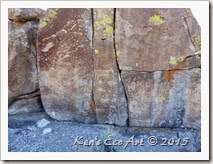 Echo Rock: Drive west and up the hill on Logan Pass Road for 6.8 miles to the Archaeological District, the beginning of which is marked by a large BLM sign announcing the area (Fig. 05). Just beyond the first sign, look for a wide spot in the road opposite a large monolith-like rock pile out in the wash on the south side of the road. This is Echo Rock, which has some nice glyphs. Click here for pictures and info ... Echo Rock. Echo Rock: Drive west and up the hill on Logan Pass Road for 6.8 miles to the Archaeological District, the beginning of which is marked by a large BLM sign announcing the area (Fig. 05). Just beyond the first sign, look for a wide spot in the road opposite a large monolith-like rock pile out in the wash on the south side of the road. This is Echo Rock, which has some nice glyphs. Click here for pictures and info ... Echo Rock. | ||
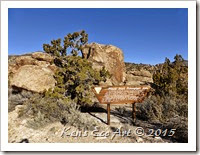 Paiute Rock: From Echo Rock, continue driving on Logan Canyon Road. Along the way you will come to a fork in the road marked with a sign stating, Mt. Irish Wilderness Area. Continue straight at this fork until you reach a second BLM sign and a steel sign-in register at the edge of the parking area, about 2 miles. This large rock pile that contains more than a dozen spectacular petroglyphs. Click here for pictures and info ... Paiute Rock. Paiute Rock: From Echo Rock, continue driving on Logan Canyon Road. Along the way you will come to a fork in the road marked with a sign stating, Mt. Irish Wilderness Area. Continue straight at this fork until you reach a second BLM sign and a steel sign-in register at the edge of the parking area, about 2 miles. This large rock pile that contains more than a dozen spectacular petroglyphs. Click here for pictures and info ... Paiute Rock. | ||
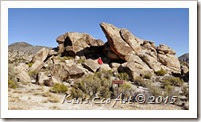 Shaman Knob: Continuing up Logan Canyon Road for about a 1/3 of a mile you come to a fork in the road. This is Shaman Road. Turn o the left (south) and drive about 300 yards to the end of the road. The isolated rock pile left of the road is Shaman Knob. In addition to petroglyphs at these two sites, there are hundreds of petroglyphs in the area. You can literally spend an entire day wandering about the area looking for them. Click here for pictures and info ... Shaman Knob. Shaman Knob: Continuing up Logan Canyon Road for about a 1/3 of a mile you come to a fork in the road. This is Shaman Road. Turn o the left (south) and drive about 300 yards to the end of the road. The isolated rock pile left of the road is Shaman Knob. In addition to petroglyphs at these two sites, there are hundreds of petroglyphs in the area. You can literally spend an entire day wandering about the area looking for them. Click here for pictures and info ... Shaman Knob. | ||
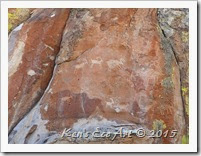 Shaman Hill: Continuing up Logan Canyon Road for about a 1/3 of a mile you come to a fork in the road. This is Shaman Road. Turn o the left (south) and drive about 300 yards to the end of the road. The boulder-covered hill on the right side of this short spur road is Shaman Hill. In addition to petroglyphs at these two sites, there are hundreds of petroglyphs in the area. You can literally spend an entire day wandering about the area looking for them. Click here for pictures and info ... Shaman Hill. Shaman Hill: Continuing up Logan Canyon Road for about a 1/3 of a mile you come to a fork in the road. This is Shaman Road. Turn o the left (south) and drive about 300 yards to the end of the road. The boulder-covered hill on the right side of this short spur road is Shaman Hill. In addition to petroglyphs at these two sites, there are hundreds of petroglyphs in the area. You can literally spend an entire day wandering about the area looking for them. Click here for pictures and info ... Shaman Hill. | ||
_______________________________________
Reference Materials:
Rock Art Glossary
Mount Irish Trail Guide
Lincoln County Rock Art Guide
"Rock Art of the Nevada Great Basin"
Manuscript written by Kenneth C. Clarke
Reference Materials:
Rock Art Glossary
Mount Irish Trail Guide
Lincoln County Rock Art Guide
"Rock Art of the Nevada Great Basin"
Manuscript written by Kenneth C. Clarke



